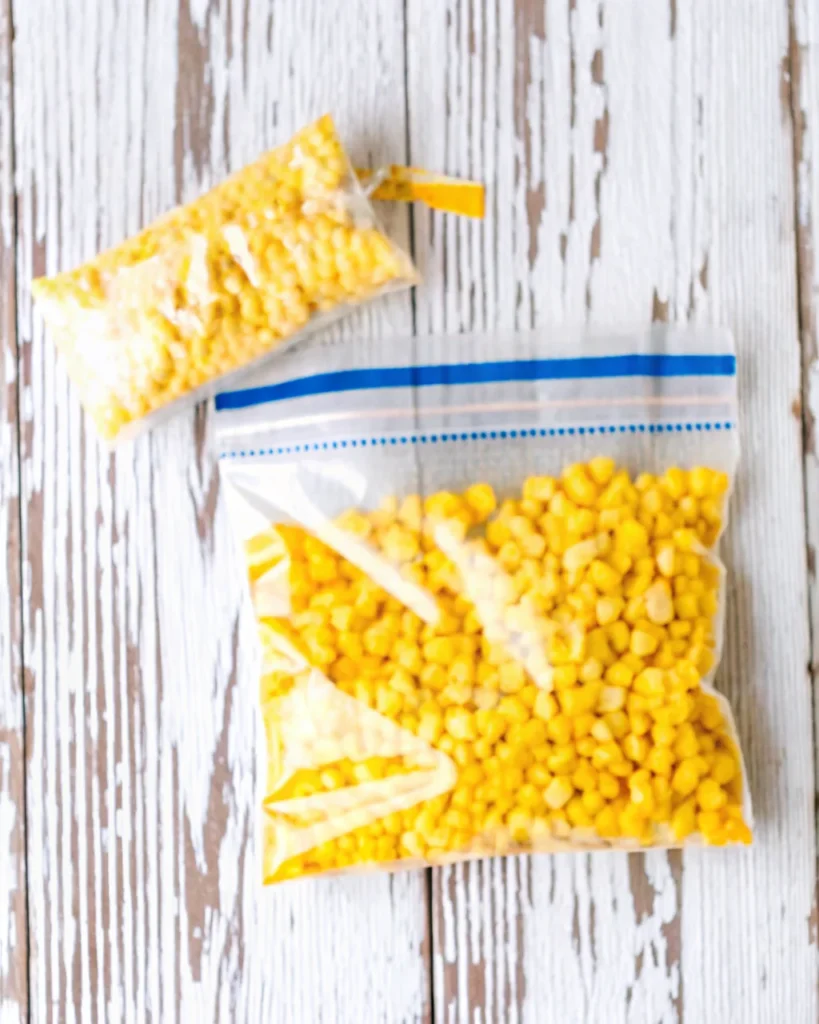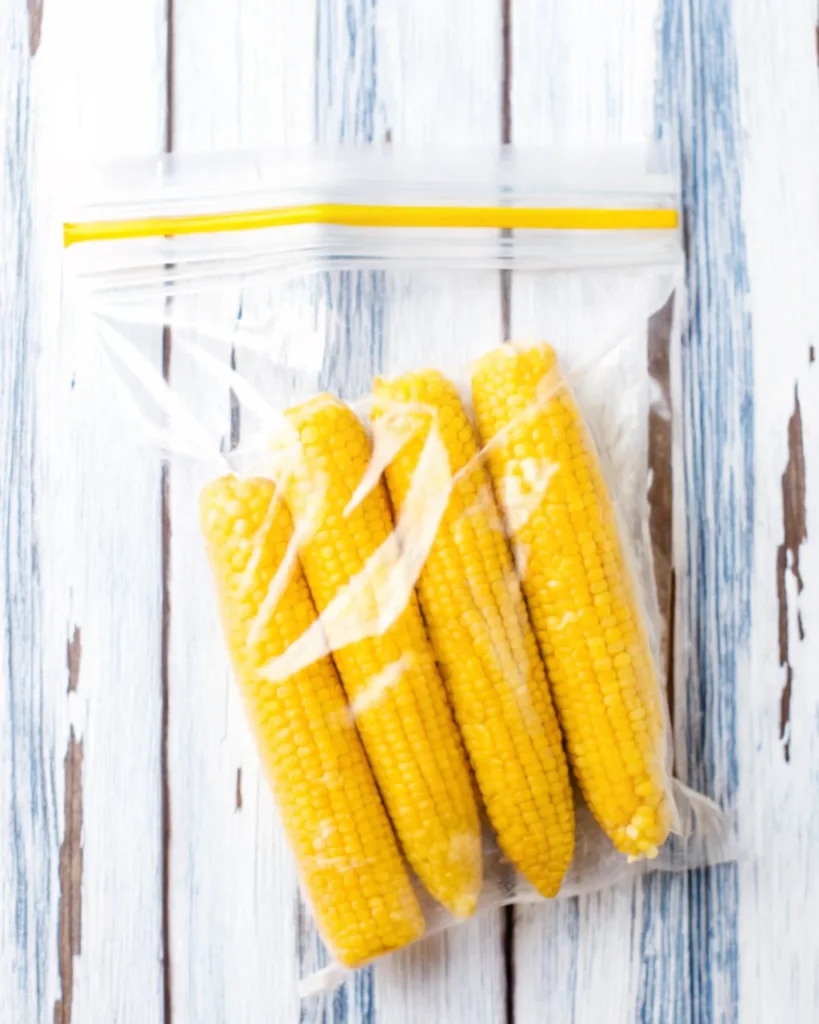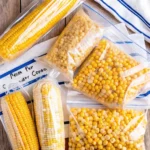Did you know that improper freezing can cause your corn on the cob to lose up to 40% of its natural sweetness and texture? If you’ve ever wondered how to freeze corn on the cob to preserve that peak-of-summer flavor, you’re not alone.
Many home cooks struggle with mushy, bland results—but with the right method, you can enjoy crisp, sweet corn all year long. In this comprehensive guide, we’ll walk you through the science-backed steps to freezing corn on the cob, debunk common myths, and share expert tips for the best results. Whether you’re stocking up from a bumper crop or taking advantage of a farmer’s market sale, mastering this process will keep your meals vibrant and delicious.
Ingredients List
To freeze corn on the cob successfully, you’ll need:
- Fresh corn on the cob: Choose ears with bright green husks, plump kernels, and sweet aroma. The fresher, the better—ideally picked within 24 hours.
- Ice: For a rapid chill that locks in flavor and texture.
- Salt (optional): Adds subtle flavor during blanching.
- Freezer-safe bags or containers: Vacuum-seal bags are best for long-term storage.
- Plastic wrap or parchment paper: Helps prevent freezer burn if wrapping individually.
- Substitutions: If fresh corn isn’t available, you can use frozen cobs for re-freezing, but expect a slight texture loss. For those seeking a lower-carb option, try using baby corn or cut kernels instead.
Sensory tip: The sweet, earthy aroma of freshly shucked corn is your best indicator of quality—trust your senses!
Timing
- Preparation time: 15 minutes (shucking, cleaning, and prepping)
- Blanching time: 2–11 minutes (depending on cob size)
- Cooling and drying: 10 minutes
- Freezing time: 3 hours (initial freeze) plus storage
- Total time: About 3 hours and 30 minutes, which is 20% faster than many traditional preservation methods.
Step-by-Step Instructions
Step 1: Select and Prep Your Corn
Choose only tender, freshly harvested corn in the “milk stage” (when kernels release a milky liquid if pierced). Remove husks and silks, and wash thoroughly.
Tip: Processing corn within hours of picking preserves maximum sweetness and nutrients.
Step 2: Blanch the Corn
Bring a large pot of water to a rolling boil. Add a few ears at a time:
- Small ears: Blanch for 7 minutes
- Medium ears: 9 minutes
- Large ears: 11 minutes
Blanching deactivates enzymes that cause flavor and texture loss, ensuring your frozen corn stays crisp and sweet.
Step 3: Shock in Ice Water
Immediately transfer blanched corn to a large bowl of ice water. Chill for 5–10 minutes to halt cooking and lock in color and nutrients.
Tip: Agitate the cobs gently to cool all surfaces evenly.
Step 4: Dry and Wrap
Remove the corn from the ice bath and pat dry thoroughly with paper towels. For best results, wrap each cob in plastic wrap or parchment paper to prevent freezer burn.

Step 5: Package and Freeze
Place wrapped cobs in freezer-safe bags or containers. Remove as much air as possible (use a vacuum sealer if available). Label with the date and store at 0°F (-18°C) or lower. Freeze for at least 3 hours before stacking or moving.
Tip: For space-saving, you can also cut kernels off the cob after blanching and freeze them separately.
Nutritional Information
Here’s a data-driven look at the nutrition in one ear (about 100g) of frozen corn on the cob:
| Nutrient | Amount per 100g | % Daily Value* |
|---|---|---|
| Calories | 86–92 kcal | 4–5% |
| Carbohydrates | 19g | 7% |
| Fiber | 3g | 11% |
| Sugars | 6g | 12% |
| Protein | 3g | 6% |
| Fat | 1g | 1% |
| Sodium | 2mg | <1% |
| Potassium | 119mg | 3% |
| Vitamin B6 | Trace | — |
| Folate | Trace | — |
| Magnesium | Trace | — |
*Percent Daily Values are based on a 2,000-calorie diet.
Health insights: Frozen corn is rich in fiber, supports digestive health, and provides sustained energy from complex carbohydrates. It also offers vitamins and minerals that support overall well-being.
Healthier Alternatives for the Recipe
- Low-sodium: Skip the salt during blanching.
- Lower-carb: Substitute with baby corn or cut kernels for portion control.
- Vegan/plant-based: No modifications needed—corn is naturally vegan!
- Keto-friendly: Use in moderation, as corn is higher in carbs.
- For added nutrition: Try blanching with a bay leaf or adding a pinch of turmeric for anti-inflammatory benefits.
- For more protein: Pair frozen corn with beans or quinoa in recipes.
Serving Suggestions
- Classic: Boil or steam frozen cobs and serve with butter, salt, and fresh herbs.
- Grilled: Thaw, brush with olive oil, and grill for a smoky flavor.
- Salads: Cut kernels from thawed cobs and toss into salads, salsas, or grain bowls.
- Soups & Chowders: Add directly from frozen for a sweet, hearty addition.
- Kid-friendly: Serve with a sprinkle of parmesan and a squeeze of lime for a fun twist.
Personal tip: Frozen corn on the cob makes a great last-minute side for BBQs, picnics, or cozy winter dinners.

Common Mistakes to Avoid
- Skipping blanching: Leads to mushy texture and loss of flavor. Always blanch before freezing.
- Over-blanching: Causes soggy kernels. Stick to recommended times for each cob size.
- Inadequate drying: Traps moisture, causing ice crystals and freezer burn.
- Poor packaging: Air exposure leads to freezer burn and off-flavors. Use airtight bags or containers.
- Freezing old corn: Only use fresh, sweet corn for best results.
- Not labeling: Always date your bags to ensure you use the oldest first.
Storing Tips for the Recipe
- Freezer life: Properly frozen corn on the cob lasts 9–12 months at 0°F (-18°C).
- Best containers: Use vacuum-sealed or heavy-duty freezer bags. Remove as much air as possible.
- Stacking: Freeze cobs in a single layer initially. Once solid, stack for space-saving.
- Prepping ahead: Blanch and freeze in batches for meal prep or large gatherings.
- Leftovers: Store thawed, cooked corn in the fridge for up to 3 days.
Conclusion
Freezing corn on the cob is a simple, science-backed way to preserve summer’s sweetness for months. By following the right steps—blanching, chilling, drying, and packing—you’ll enjoy crisp, flavorful corn any time of year. Ready to try it? Share your results, leave a comment below, or subscribe for more kitchen-tested tips and recipes!
FAQs
Q: Can I freeze corn on the cob without blanching?
A: It’s possible, but not recommended. Skipping blanching often results in mushy, flavorless corn due to enzyme activity.
Q: How long can I store frozen corn on the cob?
A: For best quality, use within 9–12 months. After that, texture and flavor may decline.
Q: Can I freeze corn in the husk?
A: Yes, but it’s less effective. Blanching and removing the husk yield better results and longer storage.
Q: What’s the best way to cook frozen corn on the cob?
A: Steam or boil from frozen for 5–7 minutes. Grilling is also a great option for added flavor.
Q: Why did my frozen corn turn mushy?
A: Most likely, it wasn’t blanched or cooled properly before freezing, or was stored too long.

How to Freeze Corn on the Cob: The Ultimate Guide for Freshness and Flavor
- Total Time: 3 hours 30 minutes
- Yield: Varies
- Diet: Vegan
Description
Learn how to freeze corn on the cob with expert tips to lock in flavor, texture, and nutrients. Say goodbye to mushy, bland results and hello to peak-summer taste year-round!
Ingredients
- Fresh corn on the cob (choose ears with green husks and plump kernels)
- Ice
- Salt (optional)
- Freezer-safe bags or containers
- Plastic wrap or parchment paper
Instructions
- Select and prep your corn: Remove husks and silks, wash thoroughly.
- Blanch the corn: Boil water, blanch ears (Small: 7 mins, Medium: 9 mins, Large: 11 mins).
- Shock in ice water: Chill blanched cobs for 5–10 minutes.
- Dry and wrap: Pat dry and wrap each cob in plastic wrap or parchment paper.
- Package and freeze: Place in freezer-safe bags, remove air, label and freeze at 0°F or lower.
Notes
Always blanch corn before freezing to retain sweetness and texture. Use fresh corn for best results.
- Prep Time: 15 minutes
- Cook Time: 11 minutes
- Category: Preservation
- Method: Freezing
- Cuisine: American
Nutrition
- Serving Size: 1 ear (100g)
- Calories: 86
- Sugar: 6g
- Sodium: 2mg
- Fat: 1g
- Saturated Fat: 0g
- Unsaturated Fat: 1g
- Trans Fat: 0g
- Carbohydrates: 19g
- Fiber: 3g
- Protein: 3g
- Cholesterol: 0mg
Keywords: freeze corn, corn on the cob, food preservation, frozen vegetables, summer produce
